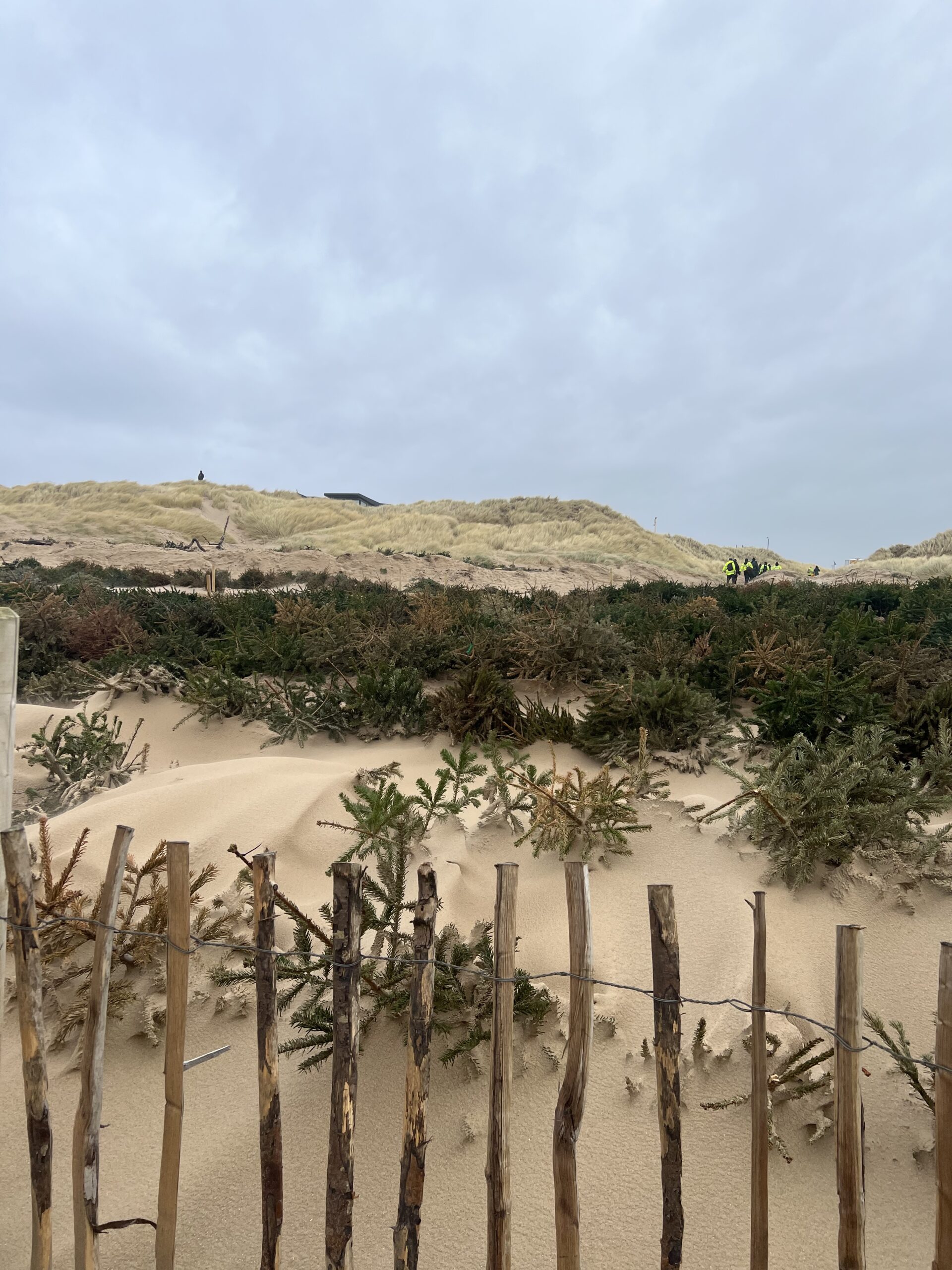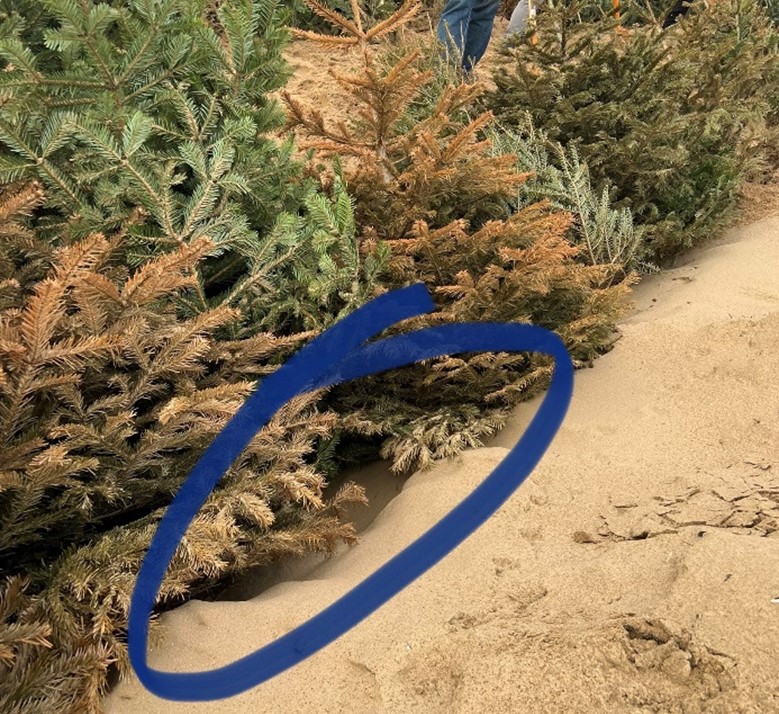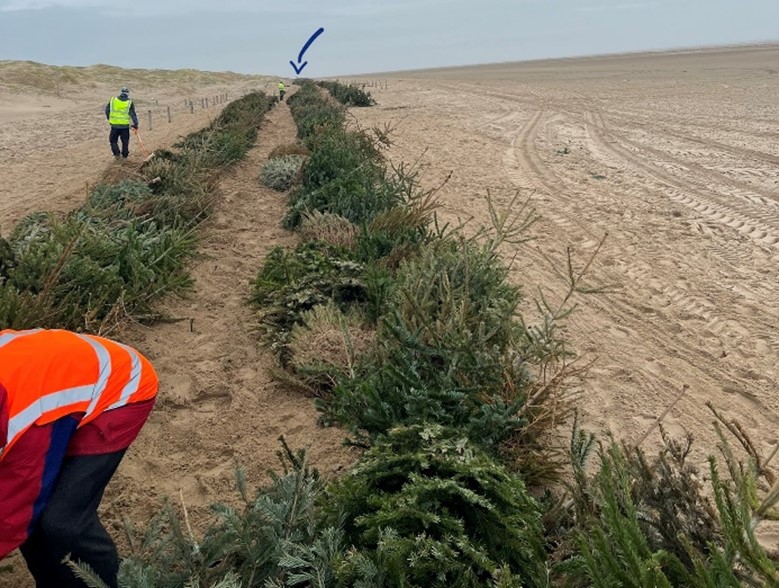This blog has been written by The Flood Hub People.
Introduction
The Flood Hub team used one of their volunteering days at an event we share on The Flood Hub News and Events.
Click here to read a case study on the project.
The volunteering day made a great opportunity to gain working experience of coastal natural flood management practices and collecting content and images to add to The Flood Hub’s social media pages. The event was held over 3 days, 30th January to 1st February. Typical that the weather on Monday and Tuesday was lovely and sunny and the day we chose to attend, Wednesday, was unbelievably windy, and rained for most of the day!
Below is a table showing how many trees have been planted each year with the help of volunteers since the Fylde Sand Dunes Project began.
| Year | 2016 | 2017 | 2018 | 2019 | 2020 | 2021 | 2022 | 2022 |
| Number of trees | 1000 | 2000 | 2000 | 2000 | 1500 | 2500 | 2000 | 2200 |
| Number of volunteers | 42 | 50 | 111 | 227 | 453 | 0 | 256 | 470 |
About the event
The Fylde Sand Dunes project aims to improve the efficiency of the sand dunes as a soft sea defence mechanism and regenerate them, so nature conservation and public appreciation of the dunes improves. This image below shows just how much the dunes have increased since the work of the Fylde Sand Dunes Project. The town now has an additional 90m worth of protection from coastal flooding and erosion.
The day started with a brew to warm up, followed by introductions, a quick health and safety talk, a run through of jobs to be completed and how to do so. We then collected our equipment and made our way to the planting location. We walked past the trees which had been buried the previous two days and were impressed at how much windblown sand they had collected so quickly.

Image: The Flood Hub – Christmas trees which had been planted on one the first and second volunteering day
A 5ft deep trench had been dug by a mini digger and the Christmas trees started to arrive on a trailer. We had to place the trees into the trench at a 45 degree angle and anchor them into the sand. We then had to ‘backfill’ to ensure the trench had been filled in. If this wasn’t done correctly, the high tides would flood the trench and lift away Christmas trees that weren’t securely buried.

Image: The Flood Hub – The trench which needed to be backfilled and compressed to ensure the trees are securely buried
As we were at the beach, it made sense to have fish & chips for lunch, so we had a good rest and then we were back to it. Luckily the afternoon was a lot nicer, the wind dropped, and the sun made an appearance every now and again.

Image: The Flood Hub – The arrow marks the point we started planting in the morning and this was our finishing point
The Fylde Sand Dunes Project Facebook page regularly share photos which show how the trees we planted have held up with the high tides. All the backfilling and compressing we did was a success and they all looked to have stayed buried! The Flood Hub team plan on revisiting the planting site (with calmer weather) and seeing how the Christmas trees we buried have held up and whether any new plant and animal species are now thriving in the improved environment. Sand Lizards are the UK’s rarest lizard, and the Fylde Sand Dunes project made the ideal location to reintroduce this species three years ago. This is now the most northerly site in England where Sand Lizards can be found!
Car sharing and carbon offsetting
The Flood Hub team met at Tickled Trout services on the A59/M6 junction in the morning and then car shared for the remainder of the journey. Even though the Christmas trees we planted were dead, they will make a great growing habitat for other plants to become established in the regenerated dunes, which will offset some of our carbon in the future. Marram Grass is well adapted to the harsh conditions and helps stabilise the dunes with fibrous and matted roots so other species can thrive.
Get involved in future events
The Fylde Sand Dunes Project typically holds these volunteering days in January & February. Keep an eye on Lancashire Wildlife Trust website, The Flood Hub’s ‘News and Events’ page and Fylde Sand Dunes social media pages for the next events. One tree can offset hundreds of tons of carbon during its lifetime so spending a day volunteering and attending one of these sessions can have a huge impact!